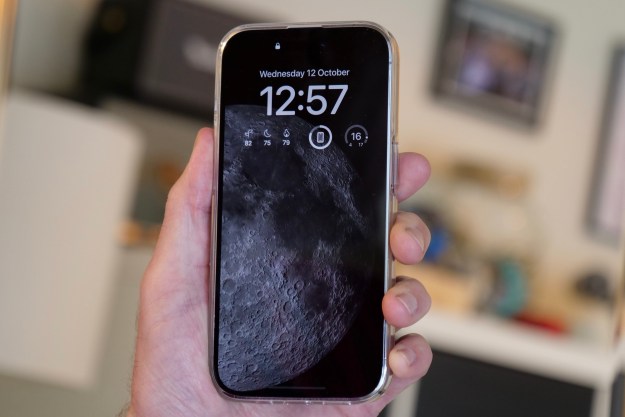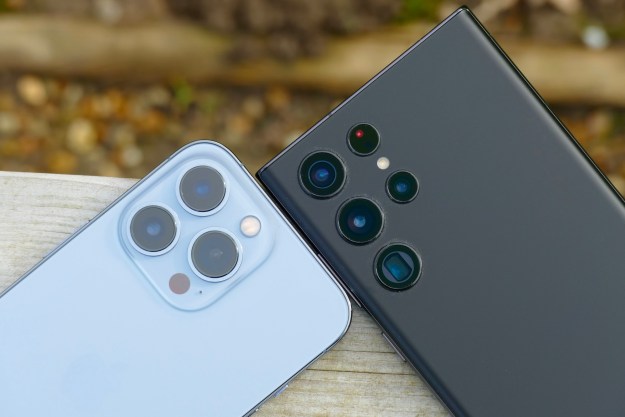So your cell phone can take and send pictures, even video. You can text message and download ringtones and games. Maybe you can even watch a little television and do some limited web browsing. But if you’re a person who’s been using mobile phones for a number of years, you can appreciate just how far they’ve come since the early days when we carried around bricks in dubiously bright neoprene covers, and simply trying to get a phone and service required the kind of stringent credit checks associated with entry to Fort Knox – or being able to rent a video in the early days.
The services available now couldn’t even be imagined by most of us 10 years ago. Nor could the numbers of people using cell phones, as a generation grows up with them as a normal, essential tool of life, as much as computers or DVD players.
Perhaps surprisingly, in general the U.S. has lagged behind Asia and Europe in the way its adopted phones. It’s really only in the last three years that there’s been a huge burgeoning in the numbers using them, whether on contract or pay as you talk. Nowadays though it seems like everyone has them – and loves to use them. They’ve become so pervasive that many countries (and a number of states) have passed laws preventing motorists from using handsets as they drive, creating the eerie hands-free conversationalist who looks to be talking to himself.
Yes, we’ve come a long way baby, but as far as phone technology goes, the simple fact is that you ain’t seen nothing yet.
What is 3G?
In Japan, always the leader of the pack, you can have a wrist videophone – about as Dick Tracy as you can get – watch all manner of television, use your phone for downloading and listening to music and browse the Web freely. Welcome to the third generation of mobile technology, or 3G as it’s known. Think of it as the cell phone equivalent of broadband. And it’s not so much the future as the present.
With 3G data can be transferred at rates between 64 and 384 kilobytes per second, a blazing speed compared to most phones whose transfer speed is slower than the old 14.4 kbps (many services aren’t at 3G yet, but at 2.5G, a sort of interim stage, with transfer of 114kbps). It will create a unified global phone standard (anyone who’s travelled outside the U.S. with a dual-band phone will understand the frustration in trying to get your cell phone to work in, say, Europe). But above all, it’s going to transform your phone into a multimedia center.
3G is already widespread in Japan and it’s hitting Europe (Finland is a leader) and America. By way of illustration of 3G’s possibilities, British mobile service O2 has replaced its own mobile phone Internet service which it introduced with a flourish only three years ago for i-mode, from Japan’s NTT DoCoMo – and this after its O2 Active has been a runaway success, as had Vodafone’s Live mobile Internet service. But with the ability to access more sites (over 100), more customers will use the service, spending more money. i-mode currently has about 55 million subscribers in 22 countries. The cost is quite cheap – about $5 for every hundred pages browsed. But of course you’ll want a new phone to be able to use it fully, buying into the British love of replacing handsets, which happens on average every 18 months.
PDA’s, MP3 Players and Cell Phones Converge

Of course, with a phone you have a screen in front on you. Yes, you can take pictures and make them wallpapers, but that’s not even scratching the surface of the phone’s possibilities.
In America, MobiTV pioneered the idea of real-time television on your cell phone with a service that’s now available from both Sprint and Cingular (Verizon offers it own service called vCast, which, according to some reports isn’t real-time). But it won’t be long before you’ll be able to access all the networks and maybe even cable channels on your phone. That’s the beauty of 3G. Its fast connections make possible these early steps into what will become commonplace, where the pictures change frames with a much faster speed. It’s a huge market. One British research firm predicts that in five years, some 125 million people will be watching TV on their mobiles. By then phones should have, according to scientists, one megabyte per second access – about four times the speed of most U.S. home broadband services – or higher, and several gigabytes of memory. Additionally, manufacturers say screens will be larger and there will also be removable memory, the ‘smart cards’ so familiar to any digicam user – it’s already possible to put a 2GB memory stick into some of the newer phones. And with Bluetooth wireless technology which 
Games are already a big deal on mobiles, but with 3G you’ll be able to play against someone on the opposite coast just as you might online, with real-time action and much improved 3-D graphics for example. Although Sony’s new PSP is trying to position itself as the choice of gamers worldwide, with its wireless Internet access (and ability to download content – once much content becomes available for the PSP, that is), it’s likely to face some very serious competition from phones.
And much of this is happening even as you read. America is hot on the heels of the rest of the world in adopting new mobile technologies. 3G networks are arriving all over the U.S., and by the end of 2006 all of the major services should have 3G available, although you will need a 3G phone to be able to access all the services. But soon they’ll be about the only option – unless you choose to be a dinosaur and keep your old handset.
Throw Away that GPS Device
You’ll also be able to ditch that GPS unit in your car. Your cell phone will be able to act as a GPS (Global Positioning System) unit. Since 2002 all cell phones have by law, contained a GPS chip so callers could be located by emergency responders. But only recently has the technology become available to use your phone as a GPS device. In Europe, Siemens has released a phone the SXG75) equipped with a GPS module and navigation software, and the Tomtom Mobile 5 Navigation System and Wayfinder Mobile Navigation System, both with Bluetooth wireless (according to its website, Wayfinder will also work with some phones in the US), will work in your car on your mobile. In the U.S., Sprint Nextel works with both Televigation’s Telenav and Motorola’s ViaMoto. Cost? Anywhere from $6-25 a month.
The Media Center Phone

But make no mistake, a solution will be found, and probably quite quickly. After all, there’s plenty of money to be made in satisfying consumer demand, and that’s a huge driving force in progress as history has shown.
3G and Beyond
The battery issue is going to be vital for the successful implementation of 3.5G and 4G. That’s right, the third generation isn’t the end of the road, by any means. Mobile phone operators, networks and manufacturers are already looking ahead to the rolling of out of the next waves. And what can you expect there? Well, your mobile will be able to do many of the things you can now achieve online with your computer, including purchasing items and paying for them, with the phone acting as a wallet. There are even discussions about Sykpe-enabled cell phones (Skype is the leading VoIP, or Voice over Internet Protocol, service that allowed you to make phone calls using your computer). 4G should also bring truly smooth video transmission, even better than you’ll find with 3G, and probably as good as “real” television – something a few believe will be the killer app for 4G. By the time you’re really comfortable with 3G it’ll be out of date. And how soon will that be?
Well, the original plan, by NTT DoCoMo was to introduce 4G in Japan in 2010, but that’s been brought forward quite dramatically, to next year in fact. Depending how that works, it’s quite possible that 4G will be in global effect by 2009 and 2010. In theory, 4G will allow users to be simultaneously be connected to several different wireless access technologies and move between them seamlessly (i.e you’ll never know you’ve switched over) to give the most efficient signal. 4G devices may well use SDR (Software-Defined Radio) receivers which allows for better use of available bandwidth as well as making use of multiple channels simultaneously.
In other words, you’ll be able to do even more, even faster. So if you think you (or someone you know) spend a lot of time on your mobile now, that’s only likely to increase – or so the companies hope.
If all this gives you a shiver of anticipation or a long pause for thought, just consider this – 5G can’t be far away.
Editors' Recommendations
- Motorola just announced three new phones, and I need them right now
- Android 15 release date: When will my phone get the update?
- Here’s how Apple could change your iPhone forever
- How to connect an iPhone to a Mac with or without a cable
- How to use iMessage on an Android phone or tablet




